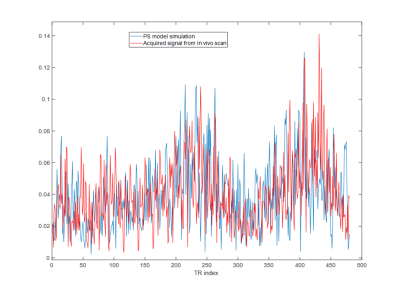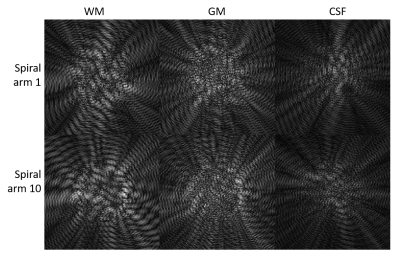Debra McGivney1, Rasim Boyacıoğlu2, Stephen Jordan3, Ignacio Rozado4, Sherry Huang1, Siyuan Hu1, Brad Lackey3, Matthias Troyer3, Mark Griswold2, and Dan Ma1
1Biomedical Engineering, Case Western Reserve University, Cleveland, OH, United States, 2Radiology, Case Western Reserve University, Cleveland, OH, United States, 3Microsoft, Redmond, WA, United States, 41QB Information Technologies, Vancouver, BC, Canada
1Biomedical Engineering, Case Western Reserve University, Cleveland, OH, United States, 2Radiology, Case Western Reserve University, Cleveland, OH, United States, 3Microsoft, Redmond, WA, United States, 41QB Information Technologies, Vancouver, BC, Canada
We have proposed a model for producing MRF signal
evolutions with approximated undersampling artifacts as a rapid method to evaluate the tolerance of a sequence to undersampling without using gridding and the NUFFT.

Figure 4. Two MRF signal evolutions for white matter. Shown in blue is the simulated signal generated from the digital brain phantom with the proposed partially separable model. In red is a signal evolution from a pixel within white matter from an in vivo MRF scan. The scale and shape of the aliasing artifacts from the simulation closely matches the measured signal.
